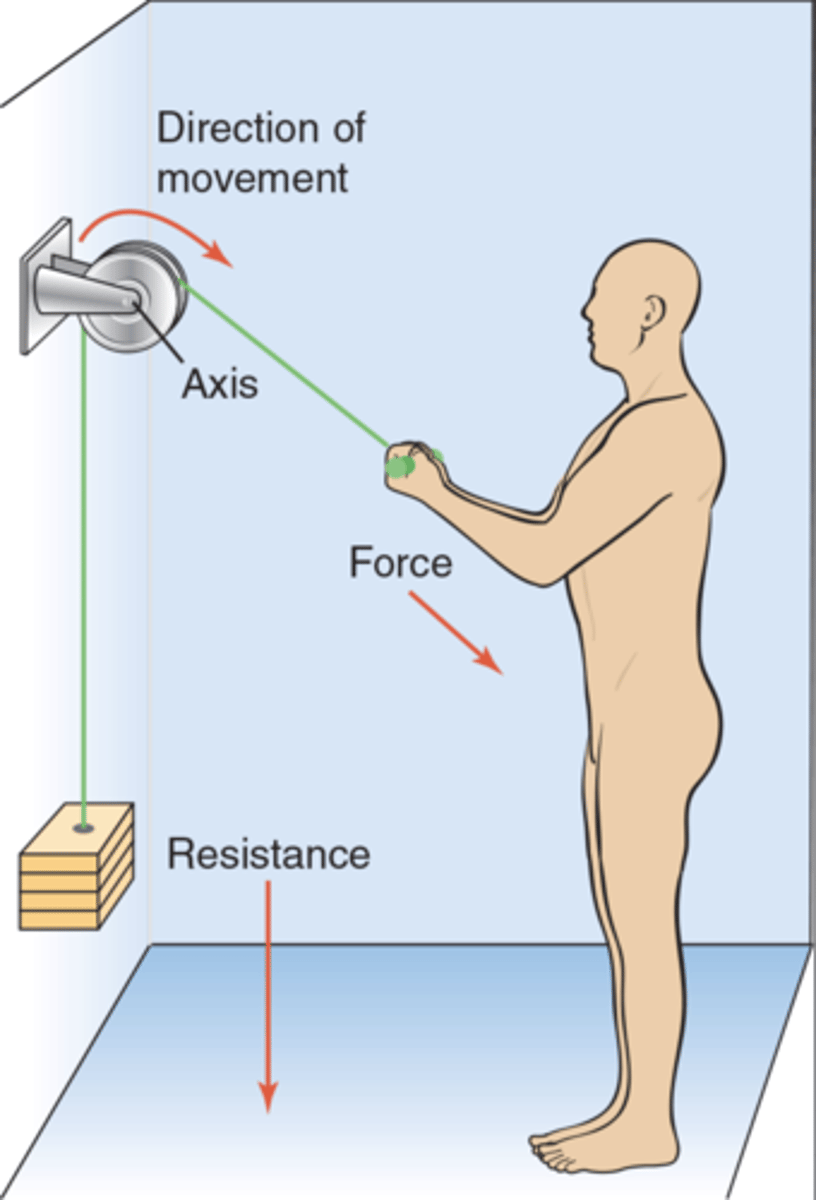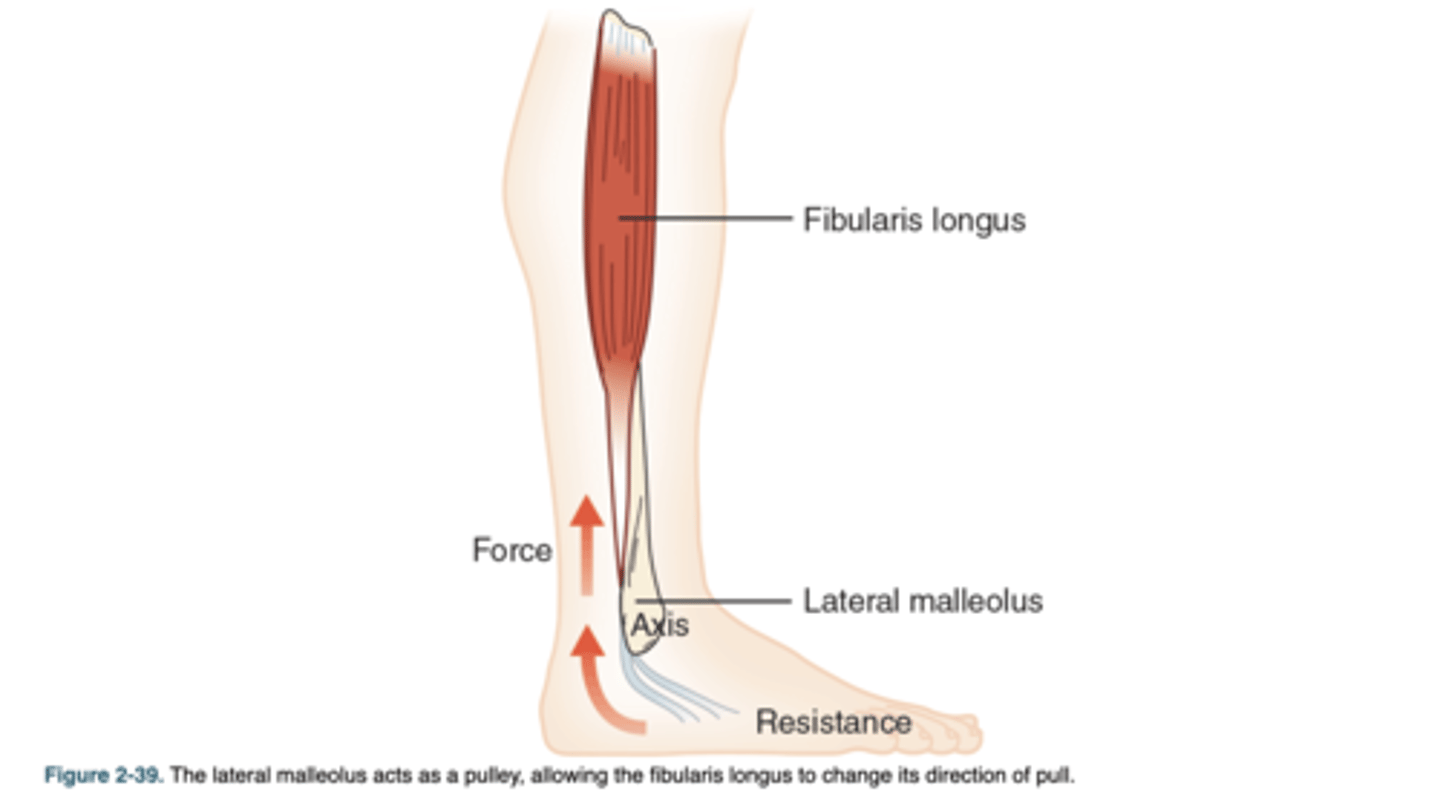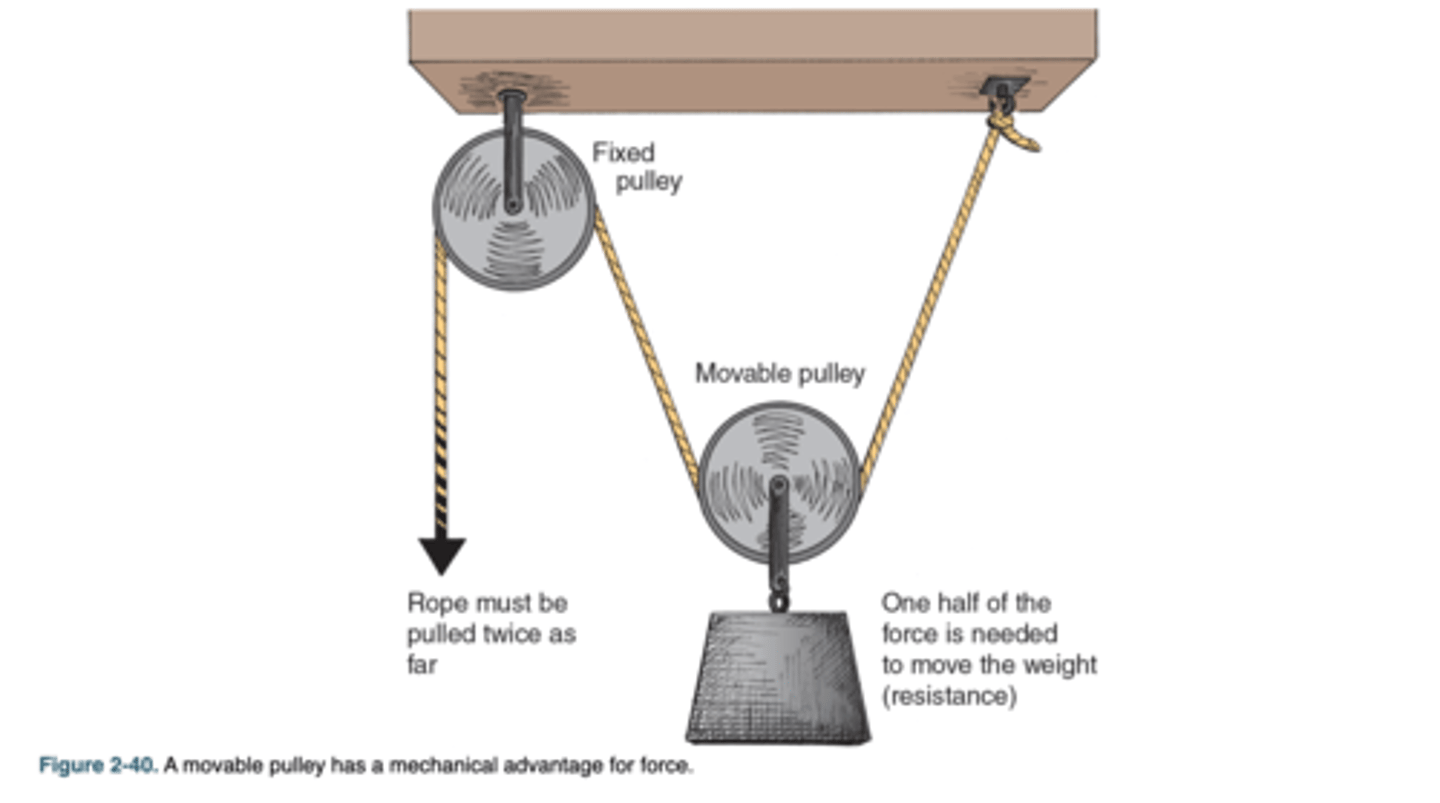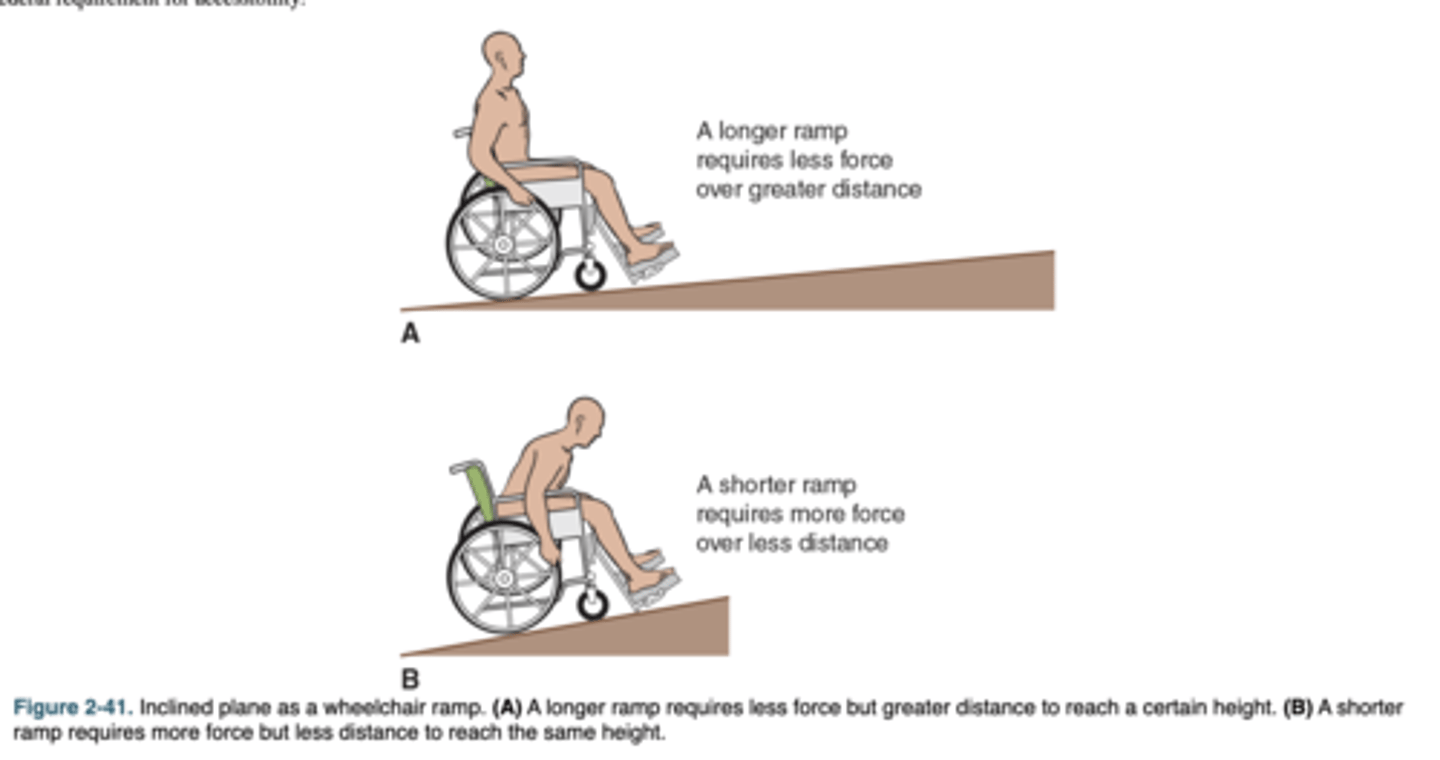Biomechanics: Pulleys and Inclined Planes in Clinical Kinesiology
1/9
There's no tags or description
Looks like no tags are added yet.
Name | Mastery | Learn | Test | Matching | Spaced |
|---|
No study sessions yet.
10 Terms
Role of a pulley in biomechanics
A pulley changes the direction of a muscle's pull or increases its mechanical advantage, improving efficiency of movement.
Lateral malleolus as a pulley
It redirects the tendon of the fibularis longus muscle, changing its pull direction around the ankle (axis = lateral malleolus).
Fixed pulley
A pulley attached to a surface that only changes the direction of force. Example: lateral malleolus acting on fibularis longus.

Figure 2-39
The lateral malleolus acts as a pulley, allowing the fibularis longus to change its direction of pull.

Movable pulley
A pulley where the load is attached to the axis of the pulley. It provides mechanical advantage by reducing the amount of force needed (e.g., a 50-lb load requires only 25 lb of pull with a single movable pulley). The trade-off: the rope must be pulled twice as far.

Movable pulley systems in the human body
No. They do not exist naturally in the body, but some exercise equipment uses them to reduce effort.
Inclined plane in biomechanics
A flat surface slanted at an angle (like a ramp) that allows a load to be moved upward with less force over a greater distance.
Inclined planes in the human body
No, but ramps in the environment (like wheelchair ramps) are examples of inclined planes used clinically.
Trade-off of using a longer ramp versus a shorter ramp
Longer ramp = requires less force but must travel a greater distance. Shorter ramp = requires more force but over a shorter distance.

Federal requirement for wheelchair ramp slope
Maximum slope is 1 inch rise for every 12 inches of run (an 8-degree slope). For example, a 24-foot ramp for a 2-foot rise meets the requirement.